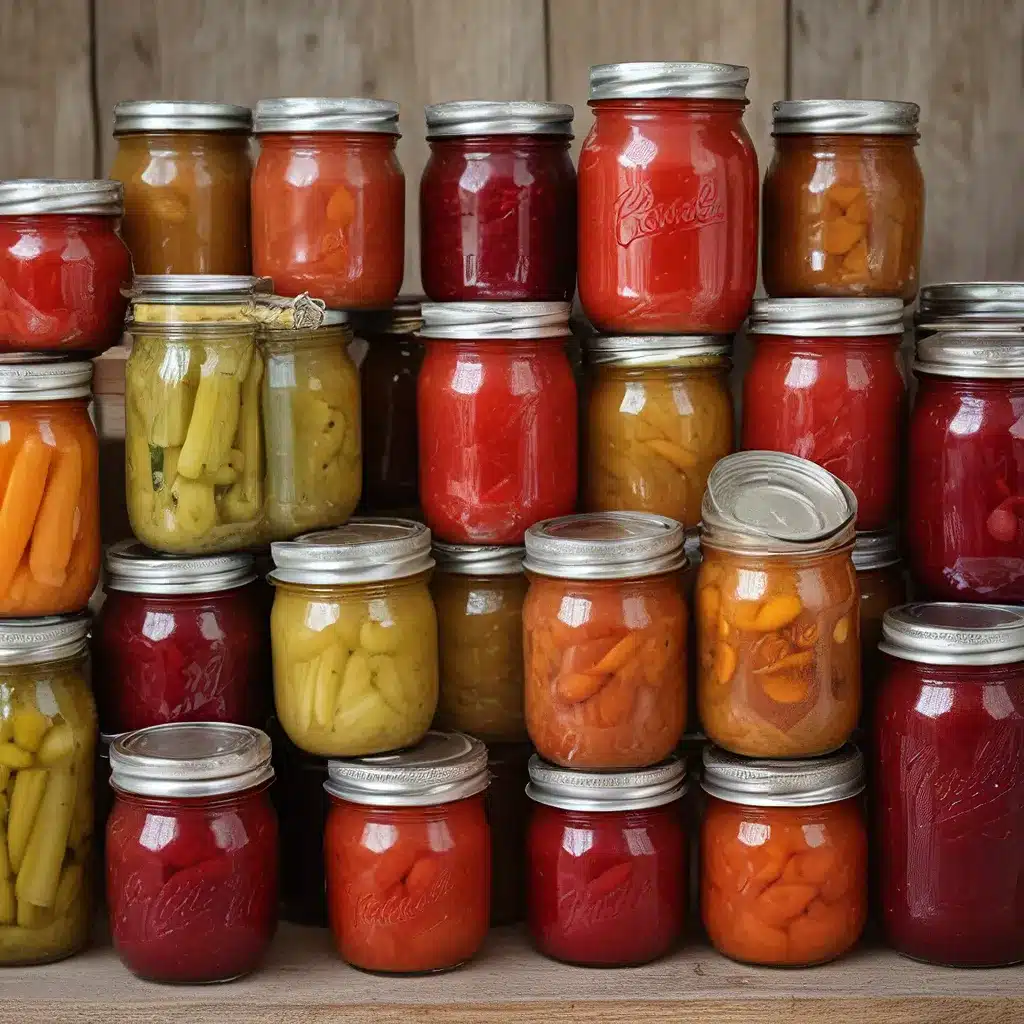
Ah, the joys of summer – ripe, juicy tomatoes, sweet berries, and a bounty of fresh produce straight from the garden. As a four-season vegetable gardener, I live for these fleeting months when the earth seems to burst with an abundance of flavor. But alas, the seasons must change, and that means it’s time to start preserving the harvest.
Now, I know what you’re thinking – canning sounds like a daunting task, fit only for the super-organized, perfectionist types. Well, pull up a seat next to me, my friend, because I’m here to tell you that preserving your garden’s bounty can be a delightfully simple and rewarding process. Sure, canning is a vital and time-tested part of the preservation game, but it’s just one tool in our arsenal.
Freezing, dehydrating, and fermenting are all incredible ways to extend the life of your summer produce. And the best part? They’re often easier and more flexible than the dreaded canning process. So, let’s dive in and explore the various methods to preserve the harvest and ensure you can enjoy the flavors of summer all year round.
Freezing: The Easiest Way to Preserve
When it comes to preserving, freezing is undoubtedly the simplest and most versatile method. I’ll admit, the risk of power failure does loom large, but a little extra preparation can go a long way. Like, did you know that a chest freezer is far more efficient at maintaining a consistent temperature than a stand-up model? And if you really want to be prepared, a SensorPush Bluetooth monitor can alert you the instant your freezer’s temperature starts to creep up.
But let’s talk about the fun part – what you can actually freeze! Whole ears of corn, peas, beans, berries, and even those gorgeous heirloom tomatoes can all go straight from the cutting board to the freezer. Just be sure to give your veggies a quick blanch first to preserve their vibrant colors and prevent that pesky enzyme action that can break them down over time.
And don’t be afraid to get creative with your freezer stash. Freeze your favorite sauce recipes in meal-sized portions, or make a batch of homemade tomato paste to add a burst of summer flavor to your winter soups and stews. The possibilities are endless!
Dehydrating: The Easiest Way to Store
While freezing is my go-to for most of my produce, I have a special place in my heart for the humble dehydrator. This humble appliance can transform an abundance of fruits, veggies, and herbs into shelf-stable pantry staples that take up way less space than their frozen counterparts.
Dehydrating retains an astounding amount of the original nutrients, and the process is as simple as slicing, dicing, and letting the machine work its magic. From savory kale chips to sweet fruit leathers, the dehydrator can handle it all. And the best part? Once your goodies are dried, you can store them in airtight containers in the pantry, no freezer space required.
I’ve got to give a shoutout to my trusty Excalibur dehydrator – it’s been a game-changer for me. The even airflow and temperature control ensure a perfect, consistent dehydration every time. And those silicone fruit leather sheets? Pure genius. No more sticky messes or lost bits falling through the cracks.
Fermenting: The Gut-Healthy Way to Preserve
Now, let’s talk about a preservation method that’s as old as time itself – fermentation. This centuries-old technique not only extends the shelf life of your produce, but it also increases the nutrient content and introduces a host of gut-healthy probiotics. Talk about a win-win!
I’ll admit, I was a little intimidated by the idea of fermentation at first. But once I got my hands on some specialized lids and weights, it was smooth sailing. Those little airlock lids and glass fermentation weights are absolute game-changers, keeping your veggies safely submerged in the brine while allowing that all-important CO2 to escape.
From sauerkraut and kimchi to kombucha and pickles, the fermentation world is your oyster. And the best part? Once your ferments are done, they can hang out in the fridge for months, providing a steady supply of tangy, probiotic-rich deliciousness.
The Power of Preservation
As I look out at my lush, bursting garden, I can’t help but feel a sense of excitement and anticipation for the preservation challenges ahead. Sure, canning may not be my personal favorite, but I know that by employing a variety of preservation techniques, I’ll be able to extend the life of my summer bounty well into the cold, dreary months.
So, whether you’re a seasoned preserver or just dipping your toes into the world of food preservation, I encourage you to explore the wonders of freezing, dehydrating, and fermenting. With a little bit of preparation and some creative thinking, you’ll be enjoying the flavors of summer all year round.
And who knows, maybe you’ll even discover a new favorite preservation method along the way. After all, the journey of preserving the harvest is half the fun. So, what are you waiting for? Get out there and start conquering that garden!
Home Cooking Rocks has all the resources you need to get started on your preservation adventure. From canning guides to dehydrator recipes, they’ve got you covered. So, let’s get prepping – the flavors of summer are waiting!






